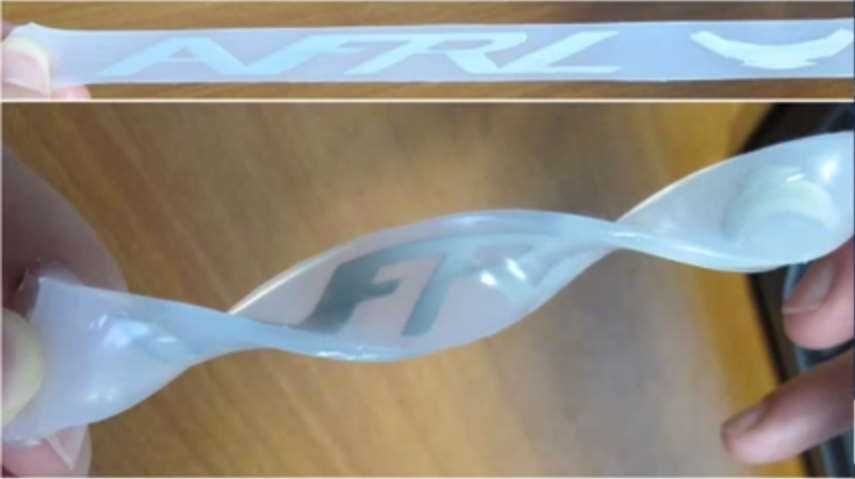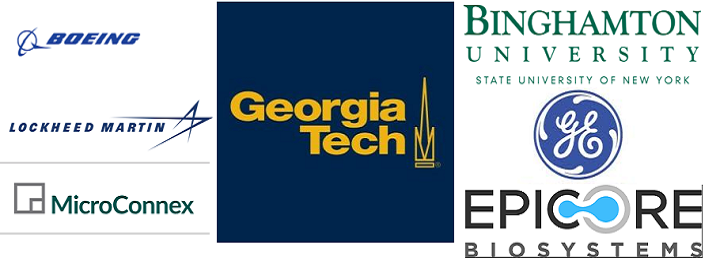 Formed as the result of an agreement between the US Department of Defense and FlexTech Alliance in 2015, NextFlex, America’s Flexible Hybrid Electronics (FHE) Manufacturing Institute, is a consortium made up of academic institutions, companies, non-profit organizations, and state, local and federal governments with a common goal of advancing the US manufacturing of FHE. NextFlex is one of the leaders in the Manufacturing USA network, and since its inception has been working to facilitate the creation of innovation in FHE – a class of low-cost, conformable, lightweight, and 3D printable devices used in multiple markets, including medical and robotics.
Formed as the result of an agreement between the US Department of Defense and FlexTech Alliance in 2015, NextFlex, America’s Flexible Hybrid Electronics (FHE) Manufacturing Institute, is a consortium made up of academic institutions, companies, non-profit organizations, and state, local and federal governments with a common goal of advancing the US manufacturing of FHE. NextFlex is one of the leaders in the Manufacturing USA network, and since its inception has been working to facilitate the creation of innovation in FHE – a class of low-cost, conformable, lightweight, and 3D printable devices used in multiple markets, including medical and robotics.
This week, NextFlex announced the award recipients for the latest round of its successful Project Call program, which has already awarded over $59 million in development funding. Last summer, the consortium awarded funding to Optomec, Binghamton University, GE, Intrinsiq Materials, Lockheed Martin, and the University of Maryland, which worked as development partners for its Project Call 2.0 work on allowing conformal 3D printing of functional dielectric and conductor materials on complex 3D surfaces through advanced tooling, software, and printing processes.
Project Call 3.0, the latest round of the program, asked universities and companies to submit projects that could develop methods and components to bridge gaps in FHE manufacturing, as well as take on industry-driven problems.
Malcolm Thompson, the Executive Director of NextFlex, explained, “With Project Call 3.0, we wanted to focus on the future of FHE and how it would be used to improve daily life. The seven projects we’ve selected not only make exciting developments in fields like healthcare, avionics or heavy industry, but they’re creating building blocks upon which future researchers can create new applications with FHE, accelerating the pace of true FHE innovation.”
This Project Call highlights the continuing interest and momentum in finding applications for devices manufactured with FHE, which combines thin, flexible silicon chips with sensors and 3D printed circuitry. NextFlex announced that it has awarded $12 million in funding, including $7 million in cost-share contribution from its new participants, to a total of seven projects this round, which will, according to a release, fuel the “development of FHE projects.”
The seven projects that received funding from NextFlex’s Project Call 3.0 are:
- 3D printed passive elements that evaluate geometric and chemical behavior of printed materials to provide long-term stability for resistors, capacitors and inductors; development led by Boeing.
- large area sensor network that detects humidity, pressure, strain, temperature, etc., then communicates status in industrial systems and infrastructure; development led by Boeing.
- thin, flexible systems for disposable, “skin-like” health monitoring systems for healthcare and athletic performance; development led by Epicore Biosystems.
- disposable, clinical-grade vital sign monitoring devices designed to increase patient safety and shorten hospital stays; development led by GE and Binghamton University.
- database about 3D printed antennas and microwave elements for use in military, avionics and microwave communications; development led by Lockheed Martin.
- epidermal sensors for robotic exoskeleton knee control of real-time injury management and rehabilitation for soldiers and industrial workers; development led by Lockheed Martin and Georgia Tech.
- low-cost flexible circuit fabrication processes using roll-to-roll printing for high volume production; development led by MicroConnex.
To keep building on its current program momentum, NextFlex will release its Project Call 4.0 sometime next month.
Discuss this story and other 3D printing topics at 3DPrintBoard.com or share your thoughts in the Facebook comments below.
Subscribe to Our Email Newsletter
Stay up-to-date on all the latest news from the 3D printing industry and receive information and offers from third party vendors.
Print Services
Upload your 3D Models and get them printed quickly and efficiently.
You May Also Like
Nikon SLM Solutions Sells SLM 500 to Primary Weapon Systems to Expand Suppressor Production
Primary Weapons Systems (PWS) is a Boise, Idaho-based manufacturer of suppressors, firearms, and related components. A subsidiary of Vigilant Gear and a sister company to aftermarket Glock slide manufacturer Lone...
3DPOD 261: Tooling and Cooling for AM with Jason Murphy, NXC MFG
Jason Murphy´s NXC MFG (Next Chapter Manufacturing) is not a generalist service; instead, the company specializes in making tooling. Using LPBF and binder jet, the company produces some of the...
HP and Firestorm Labs Form Partnership to Use Multi Jet Fusion 3D Printers in Deployable Factories
HP Inc., maker of a range of additive manufacturing (AM) solutions including the Multi Jet Fusion (MJF) ecosystem, has announced a partnership with Firestorm Labs, a developer of containerized, deployable...
3D Printing News Briefs, July 2, 2025: Copper Alloys, Defense Manufacturing, & More
We’re starting off with metals in today’s 3D Printing News Briefs, as Farsoon has unveiled a large-scale AM solution for copper alloys, and Meltio used its wire-laser metal solution to...


































